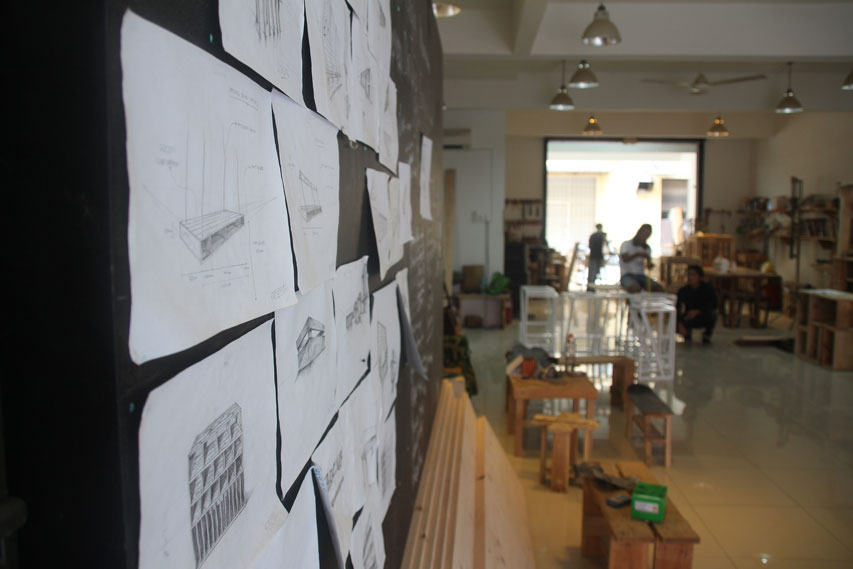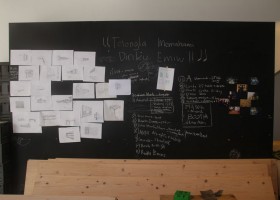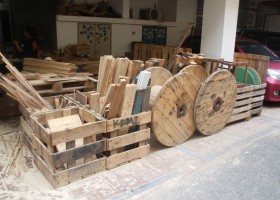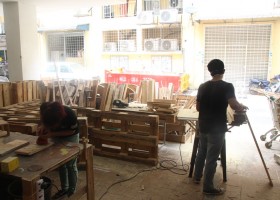Kedai + Rizal Sufar, Izat Arif & Shah Izwan
 Thirsty for JUICE content? Quench your cravings on our Instagram, TikTok and WhatsApp
Thirsty for JUICE content? Quench your cravings on our Instagram, TikTok and WhatsApp
SHOP
Kedai
Workshop + Art Studio

Kedai started as a venture between an uncle and his nephew — Rizal Sufar, who had grown weary of the advertising world, and Izat Arif, who is a promising fine art graduate from Malaysian Institute of Art (MIA), respectively. After losing touch for 15 years, they finally reconnected and decided to expand on their mutual interests by opening a workshop-cum-art space together. Rizal had the initial idea of opening it from his home, but alas, Kedai found a place in Kelana Jaya.
Coming only from a creative background, they did not have the proper business acumen, but they still plunged head first into whatever they wanted to accomplish. However, somehow along the way, the duo slowly burgeoned into a family of likeminded people who wanted to make crafts with their bare hands. It started with small items, but they then started to design and produce artisanal, one-of-a-kind furniture despite lacking in carpentry knowledge as well. The people behind Kedai like to see the space as a place where everyone benefits from an experience of mutual exchange of knowledge, skills, and ideas. They want to promote the ideas of artists who are often overlooked or overshadowed, be it through art exhibitions or their production of furniture.



Kedai is located at D-G-03 Jalan SS6/20A, Kelana Jaya, 47301 Petaling Jaya, Malaysia. Opening hours are from 10am to 10pm on all days of the week.
facebook.com/kedai.co
[email protected]
OWNERS
Rizal Sufar + Izat Arif + Shah Izwan
Artisans

Soon after Rizal and Izat opened Kedai, they brought in Shah — who’s now the senior designer — from Kedai Sebelah (the café extension of Kedai just next door) where he worked in the kitchen. Their current team of six are of disparate backgrounds with utterly no connection to art and design, but this is just a testament to Rizal and Izat’s philosophy of welcoming enthusiastic people to learn and grow together as a collective.
What prompted you three to collaborate to start Kedai?
Izat Basically, I wanted to do something on my own. So, we wanted a space that was okay for young artists to do their projects as well, but also we needed the financial, business part of it, which is the furniture and building stuff for people. We have to balance on making some money and to have funding for projects that interest us.
Rizal We started with a passion for crafting. I quit my job in advertising and collaborated with Izat—who shared the same interest as me. We discussed, and as Izat said, we support young artists, and to support them, we have to make all these furniture, so that’s what triggered us to start Kedai.
Shah I’ve been friends with Izat from our MIA days. My main purpose here is to design products and furniture.
How do you determine the price point of the items? Have people commented about the steep pricing despite the pieces being artisanal?
I I think they would compare it with Ikea and other major retailers. So what we do is really specific, we measure up to the millimetre for you and to any specific requirement you want. That is the service you get. You can’t just call Ikea and ask them to change [their specs] because your wall is crooked, so it’s based on that basically. Sometimes we do one-off pieces because we don’t repeat, and of course, from the wood itself, they’re all not the same. We can’t really replicate what we’ve done [before], even though it’s the same design. But I think nowadays people want to be individuals, the repetition is slowly being cut down. You’re paying for the individual piece.
What are some of the criteria – in terms of the art direction – for selecting the works to be exhibited in Kedai?
I I think it’s biased to what we like lah. There are a lot of galleries like that as well, you know, what is their agenda? I think we try to promote ideas. Sometimes, there are artists who do crazy things that cannot be sold or marketed by other galleries, we find that interesting as well. We try to give that idea a chance to flourish, sometimes it works and sometimes it doesn’t. We try to give that idea and artist a chance. But I think the [art shows] can be considered something of a pet project for Kedai, the main thing is the production… constantly trying to design and trying to reshape how Malaysians can live. We try to change a bit of their environment… not to say change, but let’s say you have a sort of Mak Datin setting in a house, maybe one of our pieces can break that vision.
Some time ago, we saw on Facebook that Kedai is looking for carpenters with at least two years of experience…
R On the production level, we are way back. We need at least a professional player to expand Kedai because to me that’s our main [appeal], we still have to monitor the Kedai-style because when people outside look at our work, they’ll know that it’s by us.
I It’s been one year and a half and we never had a real carpenter before, so we might want to learn something as well. And I think it’s also an opportunity to work in a different environment, you know? When we make stuff, we highlight who made the piece, it’s not just Kedai, but of course, Kedai is the hub but the designer comes first as well. If you work here, we want you to benefit as well.


 Get Audio+
Get Audio+ Hot FM
Hot FM Kool 101
Kool 101 Eight FM
Eight FM Fly FM
Fly FM Molek FM
Molek FM


